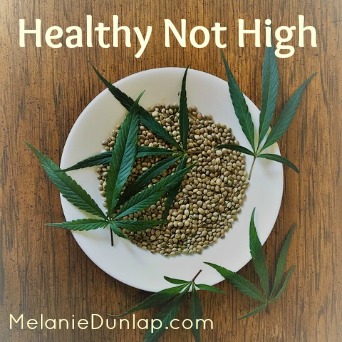When I ask people what they know about hemp I get everything from smoke filled scenes in Cheech & Chong movies to a superfood. And occasionally someone shares a story about the family member that knows a lot about hemp…wink, wink.
But the hemp I am talking about is different than what cousin Johnny has growing in the closet.
Hemp and marijuana are the same, yet different. They come from the same background, the plant species Cannabis sativa, but through breeding and cultivation the two have taken very different paths.
Hemp refers to strains of Cannabis sativa that have been bred specifically for its fiber and seeds, primarily from the stalk. It has no psychoactive or “high” effect because it has low levels of THC and high levels of cannabidiol (CBD). It is primarily used for clothing, paper, skin care, nutritional supplement and wellness support.
Marijuana is a slang term used to describe strains of Cannabis sativa bred specifically for the flowering tops and leaves that contain the psychoactive elements and tetrahydrocannabinol (THC) content that produces the “high” effect. Now widely recognized for its medicinal properties, marijuana is no longer the “reefer madness” of times past.
I am sad to say that until last year I was oblivious to the difference.
Early in my herbal training I was exposed to the healing properties of marijuana by a fellow student. He had chosen Cannabis sativa to do his plant dissertation on and until that time I had never heard the botanical name. It was my first introduction to its medicinal uses and I was blown away. He gave us the alcohol percentages for making tinctures and I made some but the hassles just weren’t worth the benefit. I had other, legal, herbs I could use instead.
Understanding hemp and its healing properties are a more recent addition to my herbal education.
But hemp is not new as a healing plant. In 1652, the great British herbalist Nicholas Culpeper wrote about the medical uses of hemp. Unfortunately, by the 1930s it was banned in North America.
In recent years, there has been renewed interest in high CBD content hemp oil as part of a healthy lifestyle. Scientific and clinical studies are proving the effectiveness of CBD as treatment for a variety of diseases including arthritis, diabetes, MS, chronic pain, PTSD, epilepsy and antibiotic-resistant infections. Its anti-cancer properties are being studied and proven at several academic research centers around the world.
When I first started hearing about CBD oils I had just started my own breast cancer journey. I really didn’t pay much attention because I was so overwhelmed.
So, the Universe stepped up the game to get my attention. It started innocently with people just asking me if I had tried CBD oil then escalated to a particular nerve pain at the sight of my surgeries. No amount of pharmaceutical pain medication would take away that pain.
Finally, I gave in and tried the CBD oil. It stopped that pain. It was the only thing that would take it away. After my 3rd surgery I didn’t take any pharmaceutical drugs, I relied solely on the CBD oil.
Even then I didn’t dig much deeper, it helped my pain and that was all I knew. Although I did find myself recommending it to other women dealing with similar situations.
As I got stronger and moved into the rebuilding phase of my health I started researching CBD oil for my own use. I learned there was a whole-body system I had never heard about…the Endocannabinoid system.
The endocannabinoid system (ECS) refers to a collection of cell receptors and corresponding molecules. The cell receptors act like locks, fitting only particular chemical molecules. The two main endocannabinoid molecules that fit those locks are named anandamide and 2-Ag.
The name anandamide comes from the Sanskrit word Ananda, which means bliss. So, basically, anandamide means bliss molecule.
Cannabinoid receptors are found all throughout the body, giving them a wide variety of functions. However, certain receptors are more concentrated in specific regions. CB1 receptors are abundant in the central nervous system. CB2 receptors are more often found on immune cells, in the gastrointestinal tract, and in the peripheral nervous system.
The diversity of receptor locations shows just how important endocannabinoids are for day-to-day bodily function. They help regulate the following:
~Sleep
~Appetite, digestion, hunger
~Mood
~Motor control
~Immune function
~Energy
~Inflammation
~Pain
~Memory
~Temperature regulation
Endocannabinoids are the chemical messengers that tell your body to get these processes moving and when to stop. They help maintain optimal balance in the body, also known as homeostasis.
For the ECS to work correctly it also utilizes enzymes in the process. An enzyme called FAAH is responsible for pulling anandamide out of circulation, CBD increases the amount of endocannabinoids in your system making more anandamide available for use by your cells. More bliss in your system!
That is why CBD is a natural mood-lifter without psychoactive effects.
There is a caution to this tale of bliss….not all CBD oils are created equal!
Between my own experience and research, I have found a brand that I feel comfortable recommending to my family and clients. In my practice, I use Joy Organics. Every batch is triple tested and made with organic ingredients.
